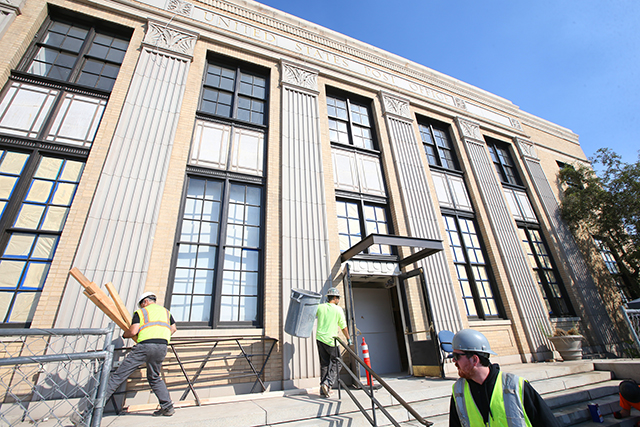Finding a solution for even the peskiest landscape problem
Published 5:00 am Tuesday, August 14, 2012
CHICAGO — If you stand in the right spot in Tom and Karen Renk’s Sugar Grove, Ill., yard, you may notice that dozens of trees on the property are in perfect lines. That’s because the area used to be a black walnut nursery, and the 50- and 60-foot trees date back to the early 1950s. These trees are not gardener-friendly.
“We found out that black walnuts, from the leaves and the roots, give off this toxin, juglone, that keeps many other plants from growing,” Tom Renk says.
Trending
So began the process of turning what had been an overgrown jungle into a beautiful yard. When they bought the lot 15 years ago, it was all scrub, he adds.
Working their way around the property, the Renks slowly cleared the undergrowth, killed weeds and after letting an area sit for a year or so, planted it. The soil was hostile — many plants would live a year or two at most, then die. But hostas thrived, juglone or not. There are now hundreds around the yard, all from stock Tom Renk bought years ago.
“I’m constantly dividing hostas,” he says. “I haven’t bought a hosta for six years.”
“When you look around, you can see the challenges that we went through,” Renk says. “We’ve probably spent thousands of dollars over the last 14 years trying to figure out what works. We roll with the punches. We figured out what we can’t do and went from there.”
Renk is not alone in having to overcome adversity in the yard. Bad soil, bad topography and forgotten patches of land are all problems that can be surmounted.
Often neglected as homeowners focus elsewhere — the front yard for show, the back for entertainment — the side yard can be an asset.
Trending
“More often (side yards) are shady rather than sunny,” says Phil Rosborough, president of Rosborough Partners (rosboroughpartners.com), a landscape design firm and contractor in Libertyville. “That’s fine, because they become lush green oases, in a sense. … You can get this woodland-garden feel that’s quite endearing when looking out a formal dining room or family room.”
Rosborough says an inviting side yard increases the level of interest elsewhere. “Sometimes (you can use) a pergola, an iron archway, some sort of element that draws you in, makes you want to head out that way and wander the property,” he says.
A gently sloping lawn is one thing, an unmowable steep incline is something else.
“You can’t use that space if it’s your front or backyard,” says Brian Casey, president of Outdoor Upgrades (outdoorupgradesinc.com), a landscaping firm based in Clarendon Hills. “One solution is to make the slope go away by bringing in a retaining wall to level off the grade, or bring in terraces to level the grade in segments.”








